1,3-Dicyclohexylthiourea
- CAS NO.:1212-29-9
- Empirical Formula: C13H24N2S
- Molecular Weight: 240.41
- MDL number: MFCD00021316
- EINECS: 214-920-7
- SAFETY DATA SHEET (SDS)
- Update Date: 2024-12-18 14:15:32
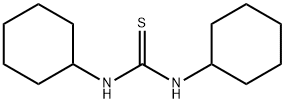
What is 1,3-Dicyclohexylthiourea?
The Uses of 1,3-Dicyclohexylthiourea
1,3-Dicyclohexylthiourea is used in the evaluation of its sensitivity, specificity and relative predictivity of battery of three in vitro genotoxicity tests to discriminate rodent carcinogens and non-carcinogens.
General Description
White crystals.
Air & Water Reactions
1,3-Dicyclohexylthiourea may be sensitive to prolonged exposure to air. Insoluble in water.
Reactivity Profile
1,3-Dicyclohexylthiourea is an amide. Amides/imides react with azo and diazo compounds to generate toxic gases. Flammable gases are formed by the reaction of organic amides/imides with strong reducing agents. Amides are very weak bases (weaker than water). Imides are less basic yet and in fact react with strong bases to form salts. That is, they can react as acids. Mixing amides with dehydrating agents such as P2O5 or SOCl2 generates the corresponding nitrile. The combustion of these compounds generates mixed oxides of nitrogen (NOx). 1,3-Dicyclohexylthiourea is incompatible with acids and oxidizing agents. 1,3-Dicyclohexylthiourea reacts with water.
Health Hazard
ACUTE/CHRONIC HAZARDS: When heated to decomposition 1,3-Dicyclohexylthiourea emits very toxic fumes.
Fire Hazard
Flash point data for 1,3-Dicyclohexylthiourea are not available. 1,3-Dicyclohexylthiourea is probably combustible.
Properties of 1,3-Dicyclohexylthiourea
| Melting point: | 33 °C |
| Boiling point: | 345.3±25.0 °C(Predicted) |
| Density | 1.0285 (rough estimate) |
| refractive index | 1.5700 (estimate) |
| storage temp. | Sealed in dry,Room Temperature |
| form | powder to crystal |
| pka | 13.80±0.20(Predicted) |
| color | White to Almost white |
| Water Solubility | <0.01 g/100 mL at 21 ºC |
| BRN | 517587 |
| CAS DataBase Reference | 1212-29-9(CAS DataBase Reference) |
| EPA Substance Registry System | N,N'-Dicyclohexylthiourea (1212-29-9) |
Safety information for 1,3-Dicyclohexylthiourea
| Signal word | Warning |
| Pictogram(s) |
 Exclamation Mark Irritant GHS07 |
| GHS Hazard Statements |
H302:Acute toxicity,oral |
| Precautionary Statement Codes |
P264:Wash hands thoroughly after handling. P264:Wash skin thouroughly after handling. P270:Do not eat, drink or smoke when using this product. P501:Dispose of contents/container to..… |
Computed Descriptors for 1,3-Dicyclohexylthiourea
New Products
Tetrabutylammonium iodide (3,3-DIFLUOROCYCLOBUTYL)METHANOL 4,4-DIFLUOROCYCLOHEXANAMINE Cyclobutylamine (S)-3-Fluoro-pyrrolidine hydrochloride 3-Oxocyclobutanecarboxylic acid N-Hydroxy-2-methylpropanimidamide L-tert-Leucine,97% 2-Bromophenylacetonitrile, 97% Aluminum oxide, basic Calcium hydroxide, 95% Diallylamine, 99% 2-Iodobenzoic Acid 3-Methoxybenzonitrile Pentachlorobenzonitrile Chloral Dibenzoyl Peroxide Titanium Dioxide O-Benzylhydroxylamine Hydrochloride 2-Nitrobenzaldehyde 2-Picolylamine (2-Aminomethylpyridine) 2-Venylpyridine Ethyl-2-Chloroacetoacetate 4-Dimethylamine PyridineRelated products of tetrahydrofuran


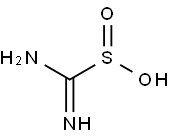
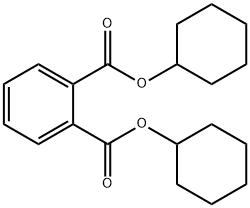


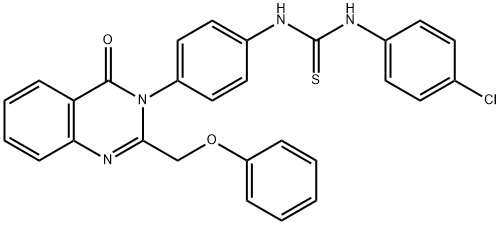
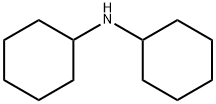
You may like
-
 1,3-Dicyclohexylthiourea CAS 1212-29-9View Details
1,3-Dicyclohexylthiourea CAS 1212-29-9View Details
1212-29-9 -
 1,3-DICYCLOHEXYL-2-THIOUREA CAS 1212-29-9View Details
1,3-DICYCLOHEXYL-2-THIOUREA CAS 1212-29-9View Details
1212-29-9 -
 1126-74-5 3-Pyridineacrylic acid 98+View Details
1126-74-5 3-Pyridineacrylic acid 98+View Details
1126-74-5 -
 tert-Butyl carbazate 98+View Details
tert-Butyl carbazate 98+View Details
870-46-2 -
 99-32-1 98+View Details
99-32-1 98+View Details
99-32-1 -
 TETRABUTYLAMMONIUM CYANIDE 10442-39-4 98+View Details
TETRABUTYLAMMONIUM CYANIDE 10442-39-4 98+View Details
10442-39-4 -
 91419-52-2 98+View Details
91419-52-2 98+View Details
91419-52-2 -
 19752-84-2 TETRAHYDRO-2H-PYRAN-3-OL 98+View Details
19752-84-2 TETRAHYDRO-2H-PYRAN-3-OL 98+View Details
19752-84-2
